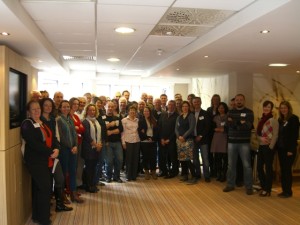 ProFouND comprises 21 partners from 12 countries, with associate members from 10 countries.
ProFouND comprises 21 partners from 12 countries, with associate members from 10 countries.
The ProFouND consortium comprises 21 partners from more than 17 regions (12 countries) in 10 EU member states, one associated country and one eligible non-member state. In addition, 20 associate members from 10 countries have undertaken to contribute to the work of ProFouND.
 |
 |
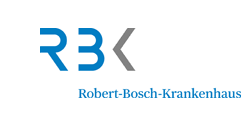 |
 |
||
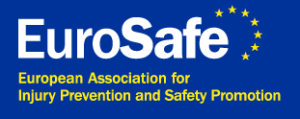 |
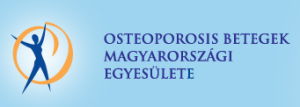 |
|
 |
||
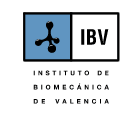 |
 |
TEI of Sterea Ellada |
 |
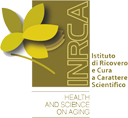 |
|
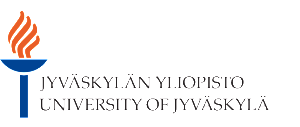 |
The consortium comprises partners from different sectors and countries: it includes health and social care providers, regional government/quasi-governmental agencies, NGOs, INGOs, SMEs, university and research establishments, a health care insurer and pan European organisations promoting safety and connected health. Partners have been selected to provide different skills and knowledge and fulfil different purposes.
The following partners are involved in the Consortium:
1. University of Manchester (UK).
The University of Manchester comprises 4 Faculties: Engineering and Physical Sciences, Humanities, Life Sciences, Medical and Human Sciences. UNIMAN boasts 25 Nobel Prize winners amongst current/former staff
and students including the 2010 prize in Physics. The Faculty of Medical and Human Sciences comprising five Schools is one of the largest faculties of clinical and health sciences in Europe. Manchester Academic Health Science Centre is one of only five AHSCs designated by UK Government. The School of Nursing, Midwifery and Social Work (110 academic, 60 research, 50 support staff) was rated top for Nursing & Midwifery research in UKRAE2008 with 85% classed as world leading/class. UNIMAN successfully led ProFaNE (Prevention of Falls Network Europe). Key personnel: Chris Todd, Helen Hawley, Maria Horne, Gretl McHugh, Heather Waterman, Mark Pilling, Emma Stanmore.
2. Glasgow Caledonian University (UK).
Glasgow Caledonian University comprises three academic schools: The School of Engineering and Built Environment, Glasgow School for Business and Society and The School of Health and Life Sciences. A dedicated Institute for Applied Health Research ensures University cross-disciplinary collaboration and with wider academic and private sectors. Research within the School of Health and Life Sciences in the UK RAE 2008 was ranked top in Scotland and top 10 in UK. The AFOOTPRINT (FP7) project is led by GCU and GCU is a partner in the FP7 MAXIMUS project. Academics have been involved in expert groups for Scotland’s
National Falls Prevention Standardisation project, the new UK physical activity guidelines for older people and the Active Ageing cross-party Government Initiative (as part of EY Active Ageing and Solidarity between Generations). Key personnel: Dawn Skelton, Steve Richardson.
3. Robert Bosch Gesellschaft für medizinische Forschung (D).
Robert Bosch Gesellschaft fuer medizinische Forschung mbH (RBMF) was founded as a non-profit research organisation in 2000 and is a subsidiary company of the Robert-Bosch-Hospital (Robert-Bosch-Krankenhaus GmbH). In the geriatric clinical department more than 1,400 patients are being treated annually. Major topics are stroke, hip fractures, Parkinson’s disease, immobilisation and amputation of lower limbs. Outpatient services are offered for elderly persons with cognitive impairment and low physical activity. Research activities and teaching of the department are attached to the Universities of Tuebingen, Stuttgart and Ulm. Research and development activities include different fields of geriatric medicine with a main focus on fall prevention and improving physical activity in frail elderly by targeted exercise programs. Further research activities are the monitoring of physical activity in older people, the recording and analysis of real-world falls data measured with body fixed sensors, user satisfaction of assistive technologies and caregiver interventions. Key personnel: Clemens Becker, Kilian Rapp, Karin Kampe.
4. Norges Teknisk-Naturvitenskapelige Universitet (N).
The Norwegian University of Science and Technology (NTNU) has medical technology as a priority area. NTNU
participates in 60 EC project under the 6th and 7th framework programmes. NTNU has close cooperation with SINTEF, an R&D organization with 1800 employees, and which is co‐located with NTNU. The Research Group on Geriatrics (RGG) at Department of Neuroscience has impaired mobility and falls in older persons as a prioritized research area and is a national leader in the area, The group has a well-established research collaboration with the municipality of Trondheim regarding falls prevention and rehabilitation of hip fractures. Key personnel: Jorunn Helbostad, Olav Sletvold, Kristin Taraldsen, Randi Granbo, Helge Garaasen.
5. Later Life Training Ltd (UK).
Later Life Training (LLT) is a SME that works across the UK and Ireland. Incorporated in 2003 (4654648 Private Limited Company), the Company delivers evidence based training (exercise regimens based on published research with known outcomes) to health, social care and fitness/leisure professionals. In the UK, the Company has trained over 5000 instructors in the UK and Ireland and has 6 office staff and 23 self employed tutors. The three directors are renowned experts in falls prevention research, physical activity implementation and tailoring of exercise for vulnerable older adults. Key Personnel: Dawn Skelton, Bob Laventure, Bex Townley.
6. EuroSafe European Association for Injury Prevention and Safety Promotion (NL).
The European Association for Injury Prevention and Safety Promotion (EuroSafe) is a non-governmental organisation, representing 35 national organisations working in one or more sectors within the field of injury prevention and safety promotion. Members of EuroSafe represent health and safety agencies, research bodies, private sector organisations such as insurance agencies, and civil society organisations, i.e. those who can effectively influence public policies and implement programmes and infrastructures with regard to safety in daily life. EuroSafe is the lead organisation for the exchange good practices in injury research and prevention in Europe through its networking programmes, publications and the series of biannual European Injury Conferences. It is in official relationship with the World Health Organization’s programme for violence and injury prevention and disability. Key personnel: Wim Rogmans.
7. Osteoporosis Betegek Magyarországi Egyesülete (H).
Hungarian Osteoporosis Patient Association (HOPA) is a non profit, non governmental umbrella organisation including 21 groups. HOPA’s mission is to increase awareness and understanding of osteoporosis to promote prevention, diagnosis and treatment of the disease. The goals of association are to nurture and enlarge the network of support groups in the country and expand our partnership working on similar or complementary issues and projects. Key personnel: Klára Zalatnai Lajosné Tóth.
8. Swiss Council for Accident Prevention bfu (CH).
bfu, founded in 1938, is a private foundation and politically independent. It has a legal mandate to prevent nonoccupational accidents and to coordinate prevention measures of all players. bfu is considered the Swiss Competence and Coordination Centre for Accident prevention in the sectors of road traffic, sport, home and leisure. The main fields of accidents occurring are defined and corresponding measures are being taken. In the department of home leisure the focus is on falls prevention. Key personnel: Barbara Pfenninger.
9. Instituto de Salud Carlos III (E).
The Institute of Health Carlos III is part of the ‘Ministry of Economy and Competitiveness’. The ISCIII is the national public research organ in Spain. The Nursing and Healthcare Research Unit (Investén-isciii) is the main Unit for Nursing Research at the national level. The main objective of this strategy is to incorporate nursing research into daily clinical practice, and to help for the development, promotion and support of the evidence based approach to health care. The unit has experience of
participating in four previous European projects, three of them as coordinators. Key personnel: Teresa Moreno Casbas.
10. Azienda Unità Sanitaria Locale 11 Empoli (I).
The Azienda Unità Sanitaria Locale 11 di Empoli (AUSL11) of Tuscany Region manages the health services within an area of 994 km², subdivided in 15 municipalities for a population of 230000 citizens. Its mission is health promotion by an integrated network of services for prevention, treatment, care and rehabilitation, and a network of social services based either at hospital and community level. All actions of AUSL11 are coordinated within the Regional Health Service. Within the AUSL11 rehabilitation and geriatric in-patient and out-patient care are managed by the Unità Operativa Complessa Cura e Riabilitazione delle Fragilità (UOC RCF). Key personnel: Francesco Benvenuti.
11. National Center for Scientific Research “Demokritos” (GR).
The National Centre for Scientific Research (NCSR) “Demokritos” is a self-governing research organisation, under the supervision of the Greek Government and is the largest research centre in applied sciences and engineering in Greece. NCSR (Division of Applied Technologies (DAT) together with IIT) is involved in technological research. Key personnel: Homer Papadopoulos, Dimitra Pappa.
12. European Connected Health Alliance CIC (UK).
The European Connected Health Alliance (ECHAlliance) is an initiative designed to support and promote the wider adoption of healthcare and wellbeing products, services, applications and innovation. In bringing together commercial, academic and healthcare stakeholders, ECHAlliance facilitates focused leadership for the development of ‘Connected and MHealth’ markets and practices across Europe and beyond. The scope includes the economic development of the full range of eHealth, EHR TeleCare, TeleHealth Telemonitoring and MHealth sectors. Key personnel: Damian O’Connor, Chris Taylor, Carmel Dickinson, Brian O’Connor.
13. Instituto de Biomecánica de Valencia (E).
IBV is a technological centre that studies the behaviour of the human body and its interaction with products, environments and services. More than 200 professionals from different academic backgrounds (engineers, physicians, biologists, sport scientists, social workers, designers, economists, etc.) work at IBV in an interdisciplinary approach. Key personnel: Helios de Rosario, Juan V. Durá.
14. Fundacio Institut Catala de l’Envelliment (E).
FICE is an independent research institute on ageing promoted by the Universitat Autònoma de Barcelona (UAB). It has been involved in fall research nationally and internationally. At a national level, it has conducted studies on fall prevalence in the community and long-term care, and has lead a randomized clinical trial on fall prevention in nursing homes, EMERCOIR. At an international level, FICE belonged to ProFaNE and is part of the MOBEX network. Key personnel: Antoni Salvà, Xavier Rojano, Laura Coll-Planas.
15. Technologiko Expedeutiko Idrima Stereas Elladas (GR).
The Technologiko Expedeutiko Idrima Stereas Elladas (TEISTE) with approximately 1300 members is a non-profit association, founded in 1987 by an initiative group of Physiotherapists in order to provide scientific and educational lifelong learning services. TEISTE coordinates an annual conference, symposia, workshops, seminars, training courses and publications to meet its aims. It has its own official scientific Journal. TEISTE also creates groups with specialized study and employment and cooperates with scientific bodies of other countries. Key personnel: Vasiliki Sakellarii, George Gioftsos.
16. Johanniter-Unfall-Hilfe in Österreich (A).
Johanniter-Unfall-Hilfe in Österreich (JUHÖ) was established in 1974 as a non-governmental charity organization. Legally, JUH is acknowledged as registered charitable (non profit) association (“Verein”, registered in Vienna, Austria, Zentrales Vereinsregister Nr. 269856203). Historically, the foundation of JUH links back to the 11th century. The JUHÖ is active across Austria and part of the international active Order of St. John. The core competences are rescue- and ambulance service, care activities, disaster relief. A part of the care activities is fall detection as it is a service sold by the JUHÖ. This particular section of the JUHÖ is a secondary end user type with direct contact to primary end users. Key personnel: Georg Aumayr, Robert Brandstetter, Robert Heindl, Elisabeth Kühnelt-Leddihn, Friedrich Drechsler.
17. Istituto Nazionale Riposo e Cura Anziani (I).
INRCA is the Italian leading public Institute in gerontology and geriatrics, with over 1000 employees, devoted to improve quality of life of older people, through seven different hospitals in five regions in Italy. The core of INRCA structure is located in the Marche region and includes two geriatric research hospitals (with more than 300 beds for acute patients, outpatient clinic long term care and rehabilitation), an Alzheimer day-care centre, a nursing home and a scientific-technological area. Basic and applied research is developed by interdisciplinary work in the bio-medical, clinical and social sectors and involves 45 full time researchers and 169 physicians also actively involved in the institutional research. Key personnel: Antonio Cherubini.
18. Regionförbundet i Västerbottens län (S).
FoU or “R & D Västerbotten” was formed in February 2011 as a result of the national initiative being undertaken to strengthen the development of knowledge in social services and the relevant parts of the health services. R & D Västerbotten organizes the 30 R & D representatives in the county’s 15 municipalities and runs a 1-year course in Evidence-based practice. R & D Västerbotten is organised under the regional council of Västerbotten (Region Västerbotten). Key personnel: Kristina Nordmark, Ellinor Nordin, Pia Friberg, Kristina Larsson, Lillemor Lundin Olsson, Doris Kjellgren, Ronnie Lundström, Fredrik Öhberg, Johan Skönevik, Urban Edström, Tomas Hedström.
19. Jyväskylän Yliopisto (FIN).
The University of Jyväskylä is a nationally and internationally significant research university and an expert on education that focuses on human and natural sciences. The University is Finland’s leading expert in teacher education and adult education, as well as the major exporter of education. The Gerontology Research Centre (former The Finnish Centre for Interdisciplinary Gerontology, GRC) is predominantly a network organization administratively located at the Faculty of Sport and Health
Sciences. Key Personnel: Taina Rantanen
20. Veiligheid (NL).
A private foundation with nearly 30 years experience as a Consumer Safety, from campaigning to dissemination to a wide variety of consumers and professions. We offer our expertise to the ProFouND project to ensure the widest reach of evidence based practice across the Netherlands and also with our extensive European and Worldwide contacts. Key personnel: J Kuiper, M Lugtenburg.
21. Achmea B.V. (NL).
Achmea offer expertise in the knowledge sharing about the role a health care insurer can have in bringing innovations to the market and how the health care reimbursement system works; Providing access to health care providers via the elderly programme and potentially stimulating one or more pilots with a best practice; Potentially contributing to the monitoring and evaluation of the effectiveness of interventions and contribution to the sustainability of the ProFouND network via Dutch and other EU health care insurers. Key personnel: Marjan Meijboom, Gerard Timmermans.
